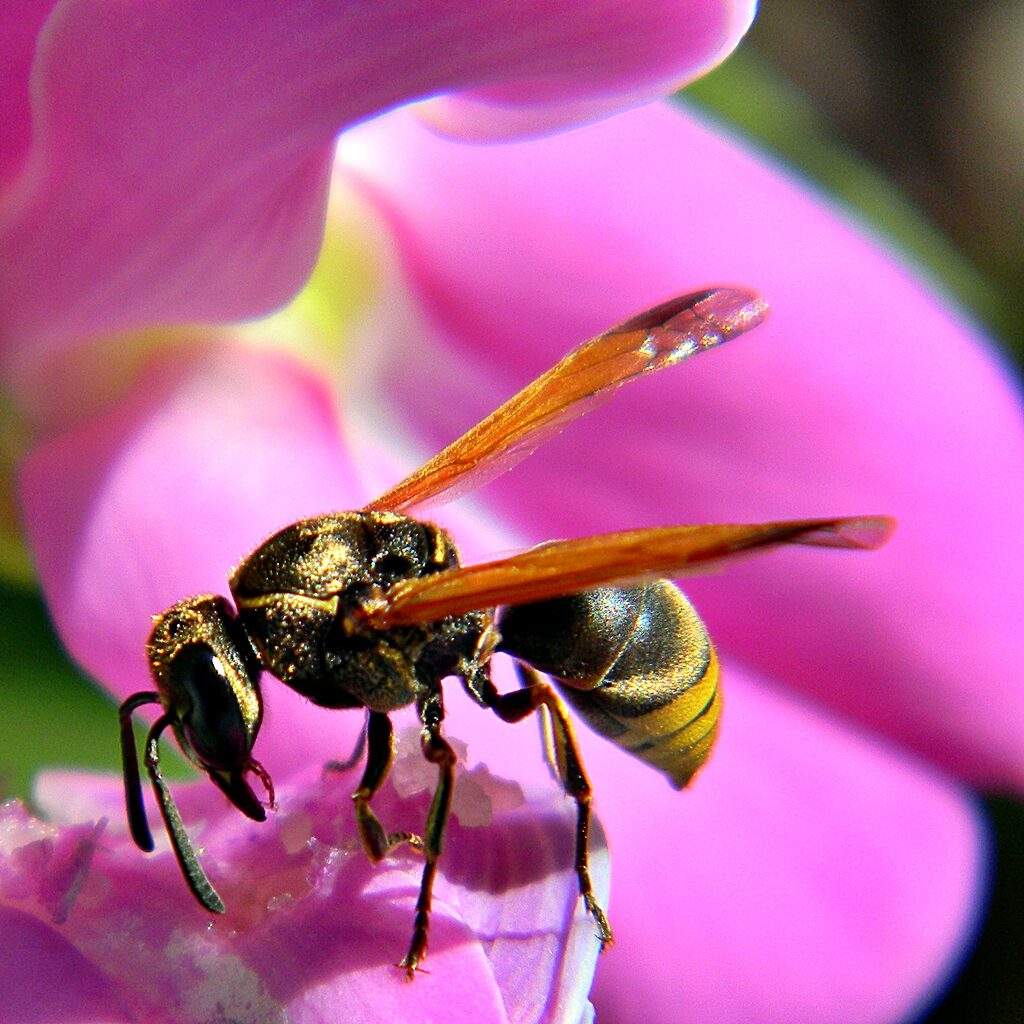Contrary to popular belief, flying is one of the safest means of transportation, moving millions of people around the world every year. Still, there are always safety issues to consider, and one of these issues are interactions with wildlife, especially birds. Now, a new study shows that wasps can also bring risks to flying aircraft.

Interactions between aircraft and wildlife are frequent and can have serious financial and safety consequences, with a lot of money spent to find ways to reduce the risk. Birds are the most common threat to aircraft, with a host of terrestrial animals also implicated in runway accidents.
“Wildlife is a serious threat to aircraft all over the world. Birds are especially dangerous, and a LOT of money is spent on managing them to reduce the risk of aircraft hitting either on the ground or in the air. Our project highlights that its not just birds (or bears, coyotes etc) that pose a threat to aircraft – insects can too,” says Alan House, lead author of the new study.
The keyhole wasp (Pachodynerus nasidens) is native to South and Central America and the Caribbean region and typically uses man-made structures (or natural cavities) to construct nests. It hunts and captures butterfly, moth, or other insect larvae to put inside the nest and covers it with mud. At airports, ideally-sized cavities are abundant in airside machinery.
Pitot probes are among the most popular cavities for insects. These are hollow instruments projecting forwards from the aircraft fuselage that measure airspeed. Wasps have obstructed them many times in the past, leading to accidents — most notably, in 1996, when an airplane crashed after taking off in the Dominican Republic, presumably due to a wasp.
Researchers Alan House of Eco Logical Australia and colleagues found that keyhole wasps at the Brisbane Airport were responsible for 93 instances of fully blocked replica pitot probes, and the wasps pose a real threat for airplane pilots.
The experiment was triggered by a number of near-misses at Brisbane in which wasps were thought to be responsible for pitot probe obstructions. House and his team wanted to figure out wat species was causing the problem, which part of the airport and airplane model were at greatest and the seasonality of wasp nesting.
The researchers used 3D-printing technology to construct a series of replica pitot probes. Real ones are expensive difficult due to their cost, House told ZME Science, so they chose replica probes from the most common aircraft. The probes were attached on steel panels that resemble aircraft skins and then mounted at gates where aircraft park whilst in transit.
The findings showed that only the exotic keyhole wasp nested in the pitot probes. No native species did so, except a parasitoid wasp but it wasn’t responsible for the blockage of the probe. Most of the blockages happened at one end of the airport, which means there was a hotspot preferred by the wasps.
Still, the results underscore mitigation strategies, such as setting traps to intercept the wasps or covering pitot probes, the researchers argue. Nesting activity followed a predictable pattern, being highest in the warmer months of November-May, which means. This pattern follows that for the species in its native range. Nesting success (the proportion of nests producing live adults) was optimal between 24 and 31°C.
The most common aircraft using Brisbane Airport (Boeing 737 and Airbus A320/330) were the most popular with the wasps for nesting, the researchers found. The study covered a 39-month period between 2016 and 2019, in which 93 instances of fully blocked process were recorded by the researchers.
The study is already achieving something: airport operators are starting to become more aware of these issues, House concludes.
“We’re hoping that airports and airlines in other parts of the sub-tropics and tropics (where this wasp can live) will also take note. Although the issues of wasps and aircraft is known elsewhere, this is the first attempt to quantify the risk and suggest mitigation measures,” House told ZME News.
The study was published in the journal PLOS ONE.









